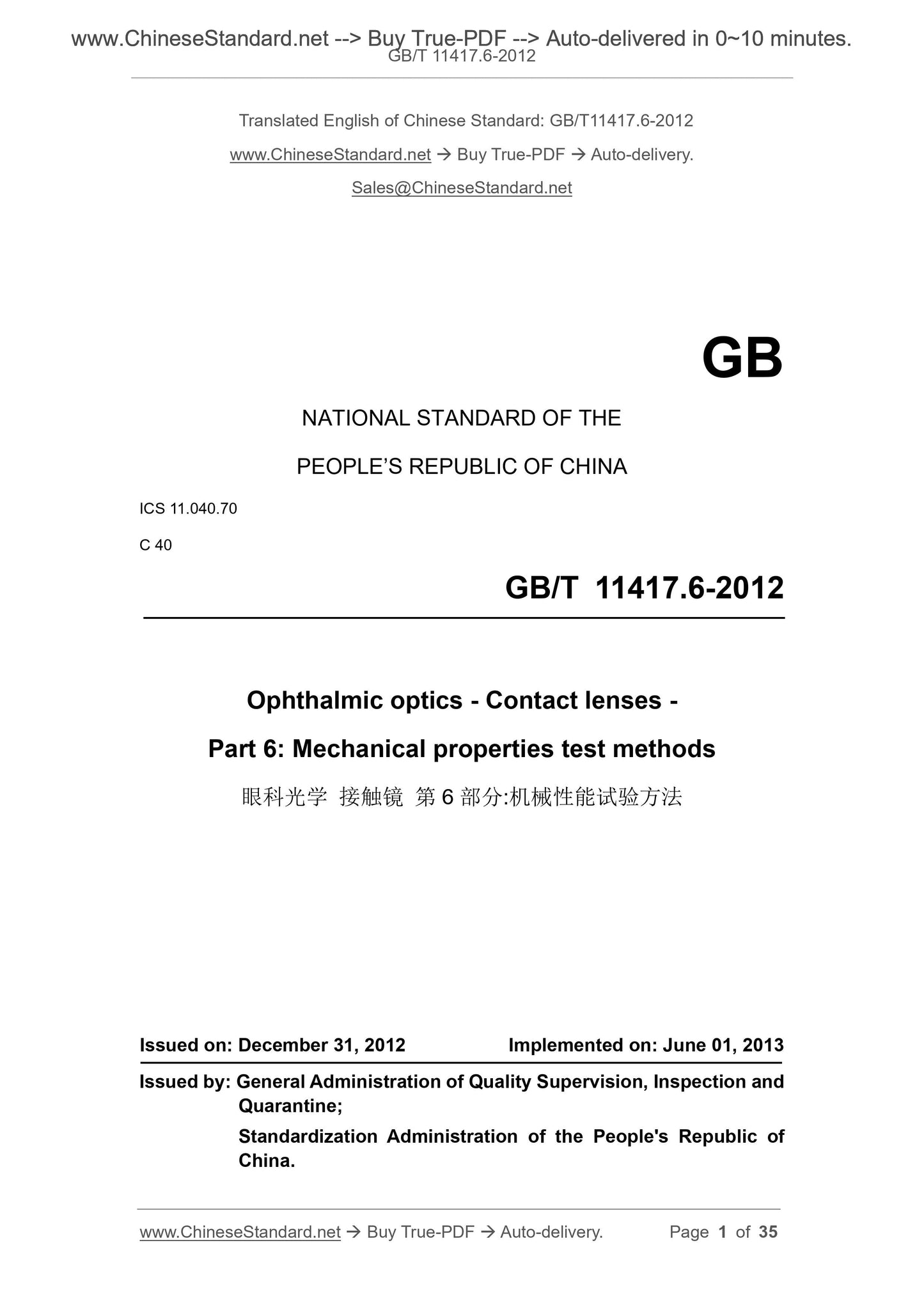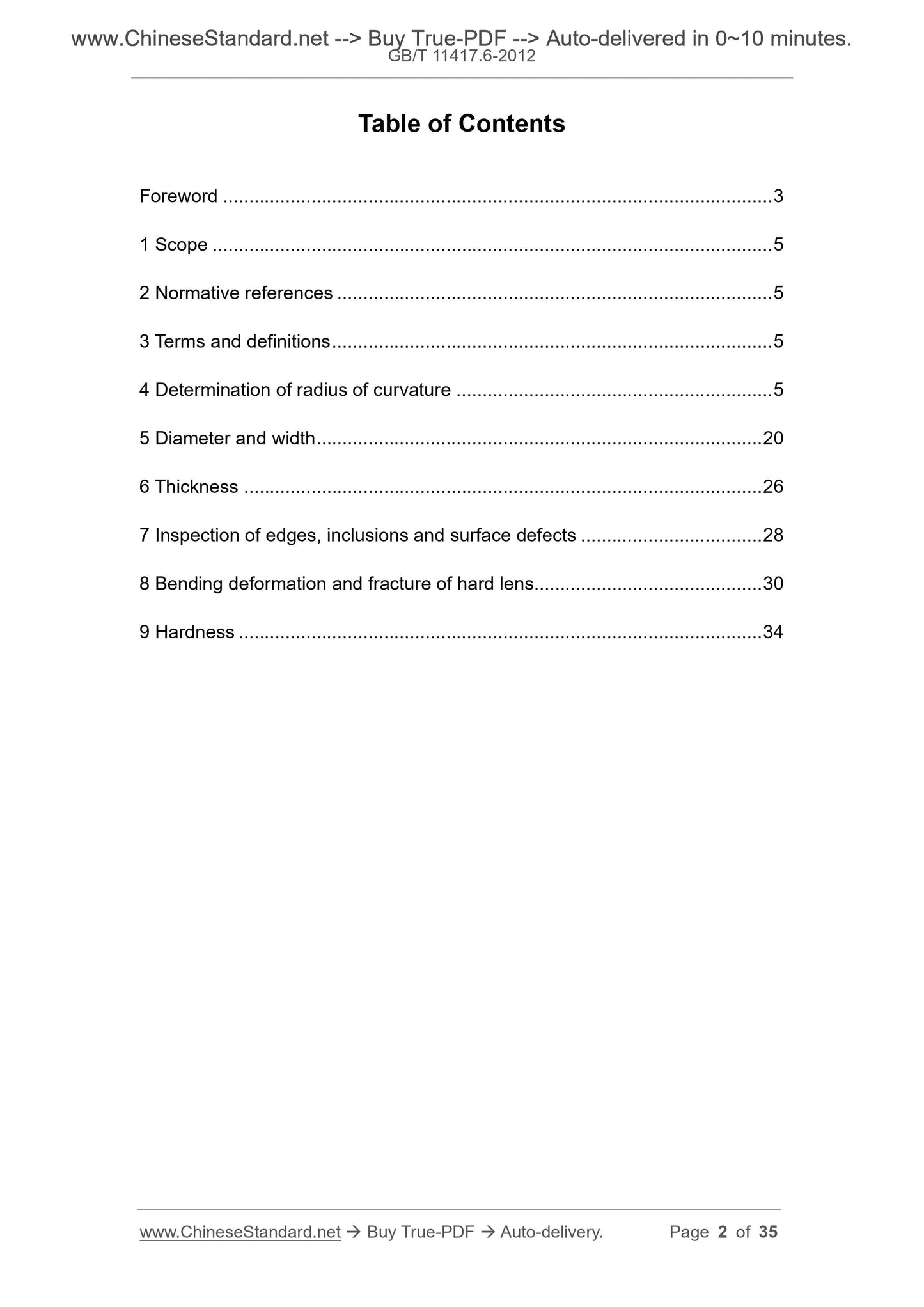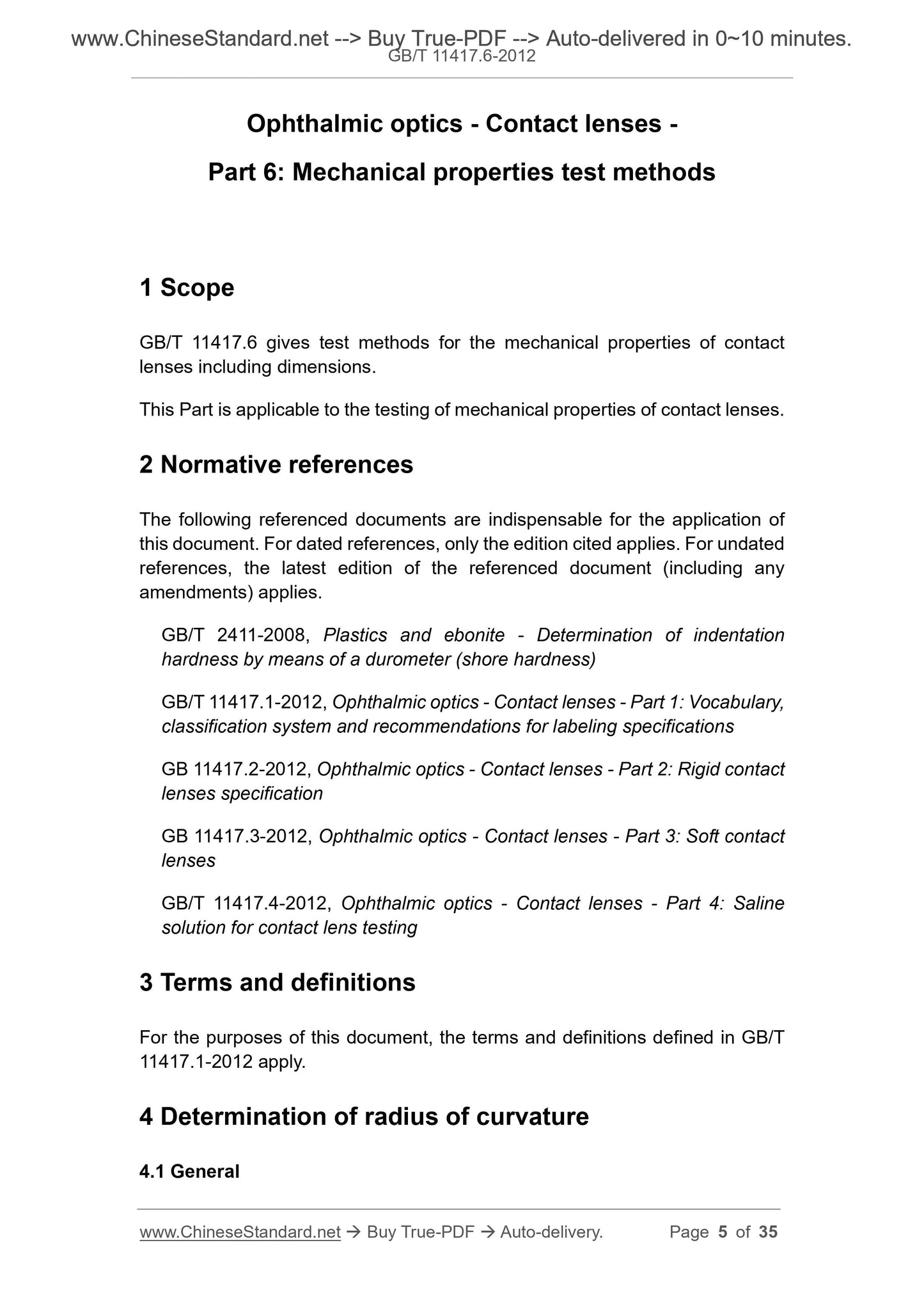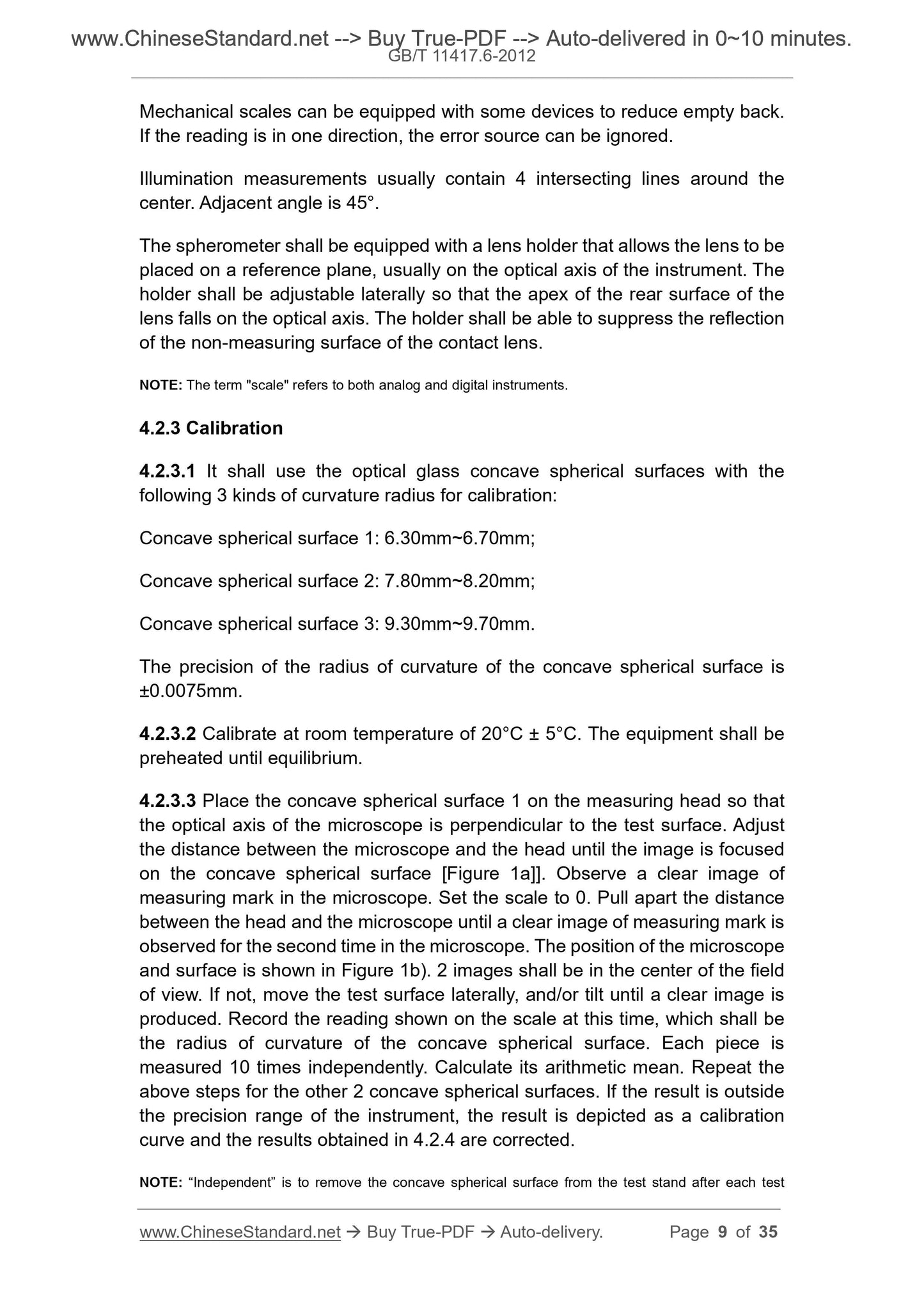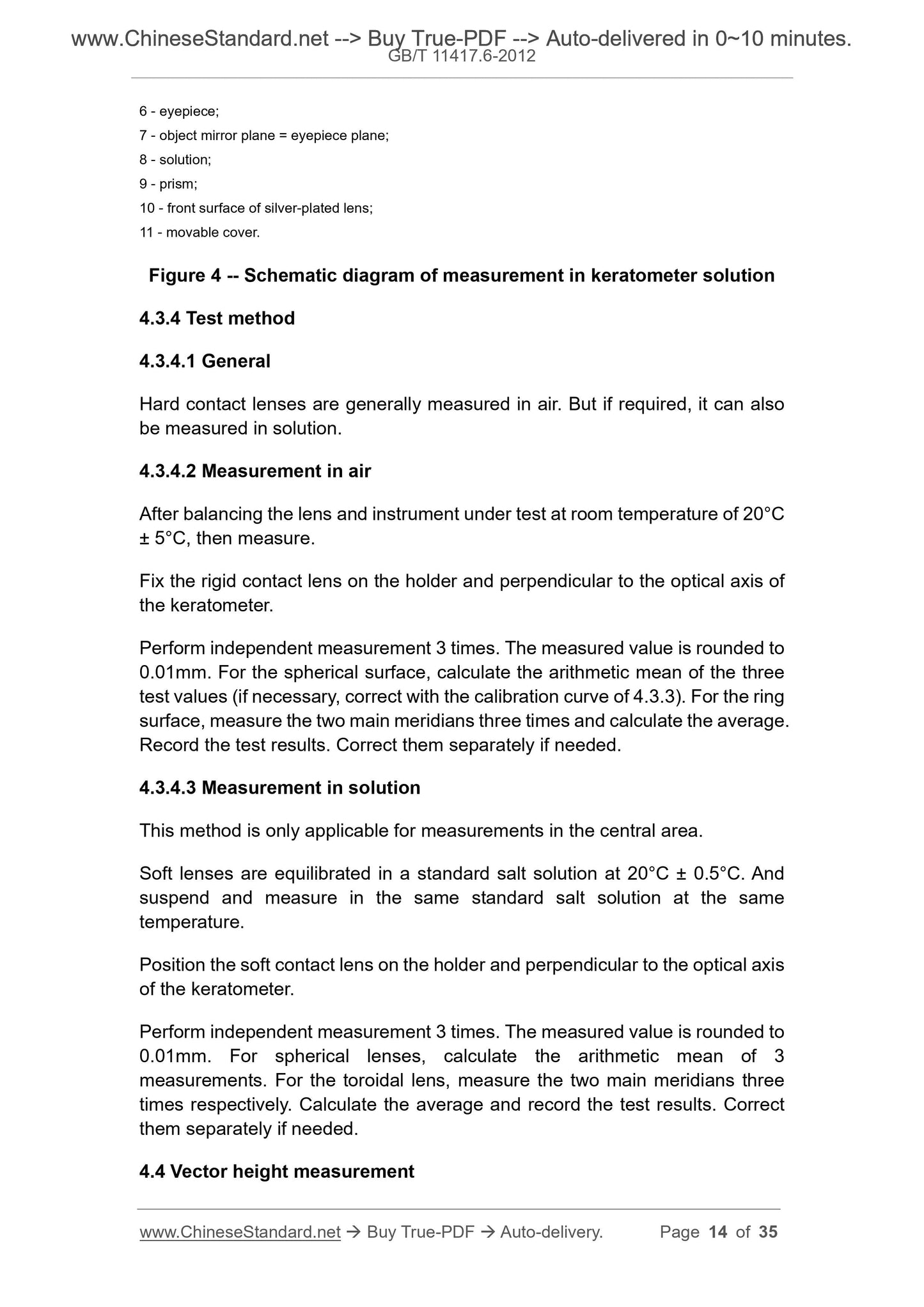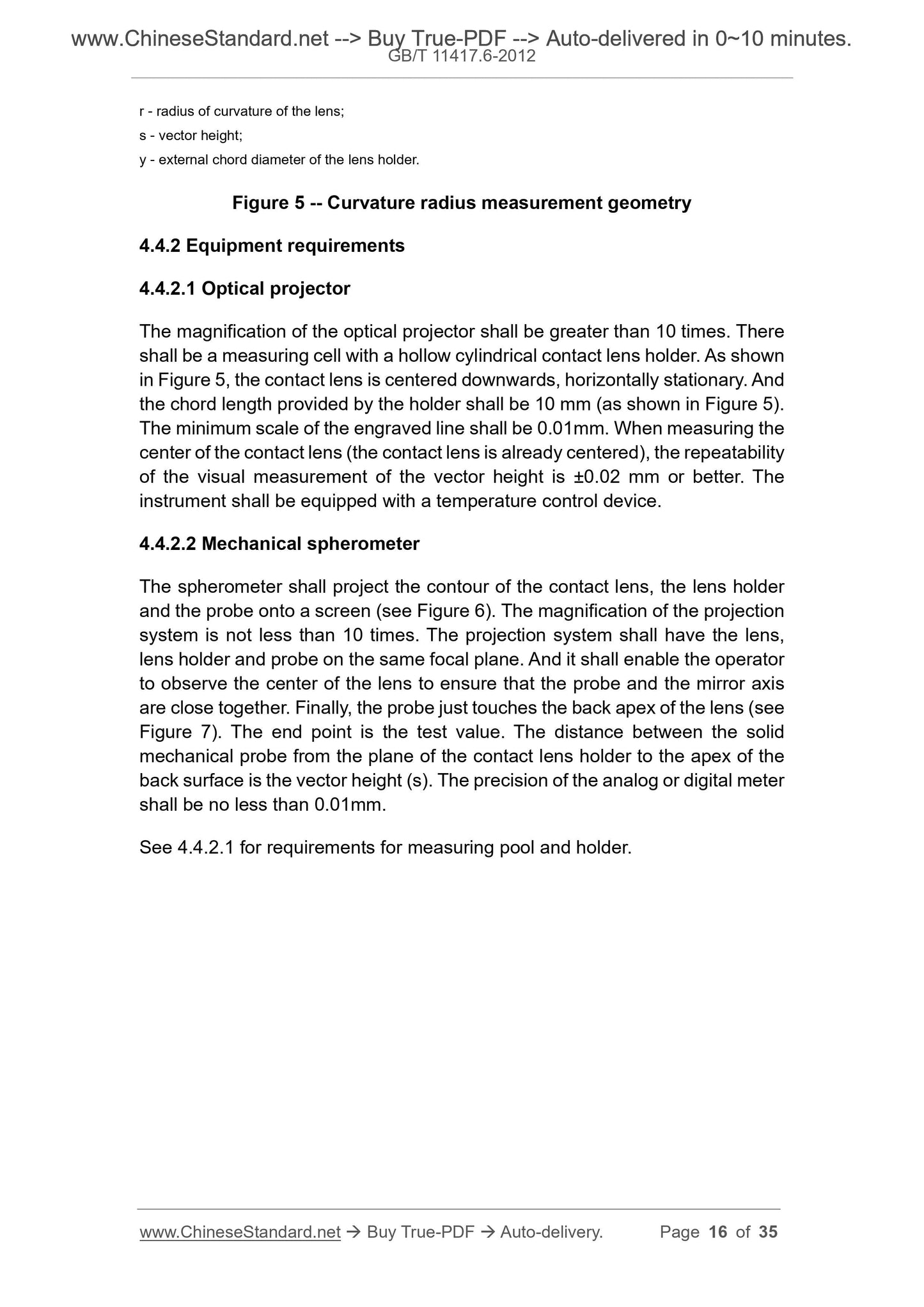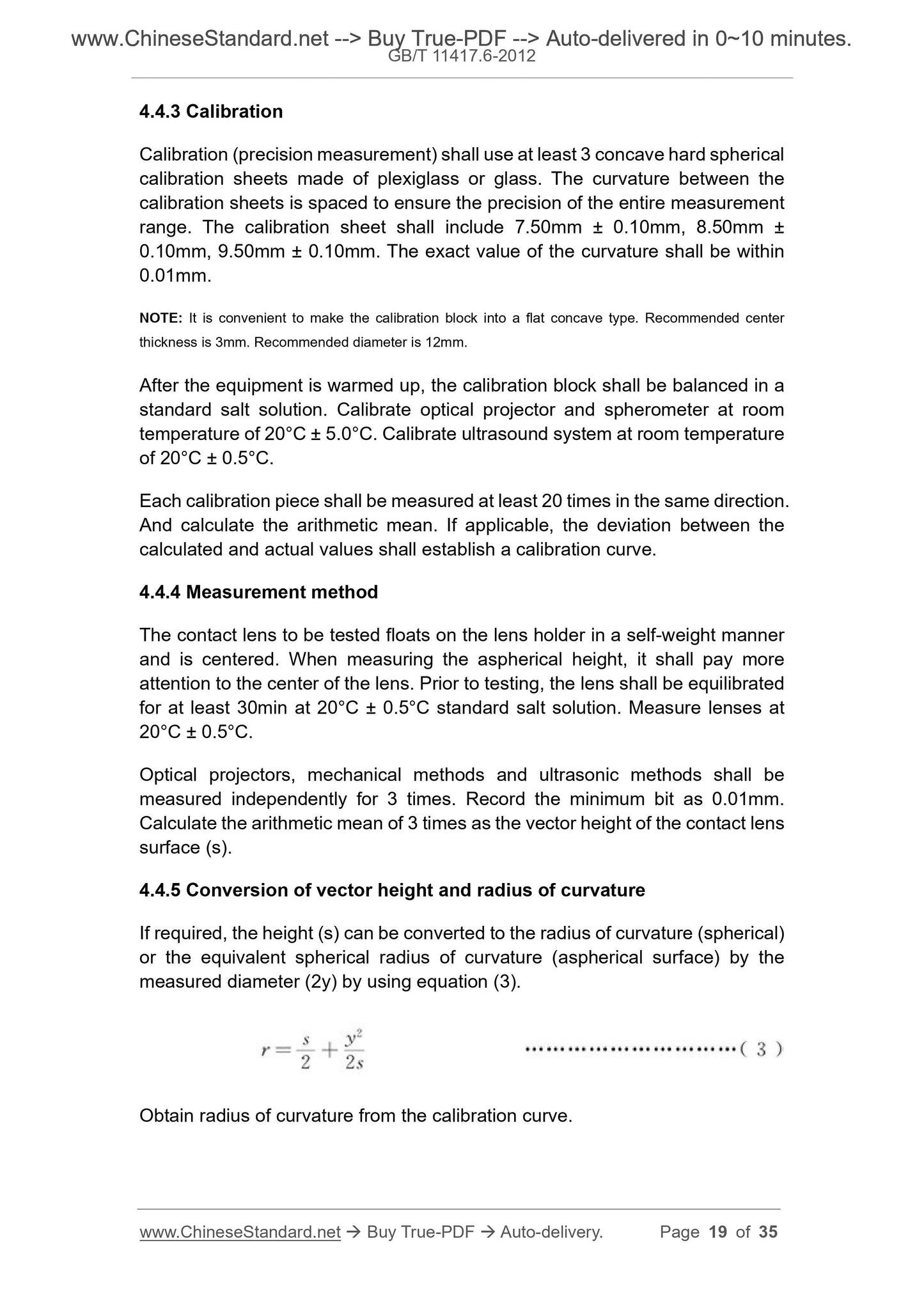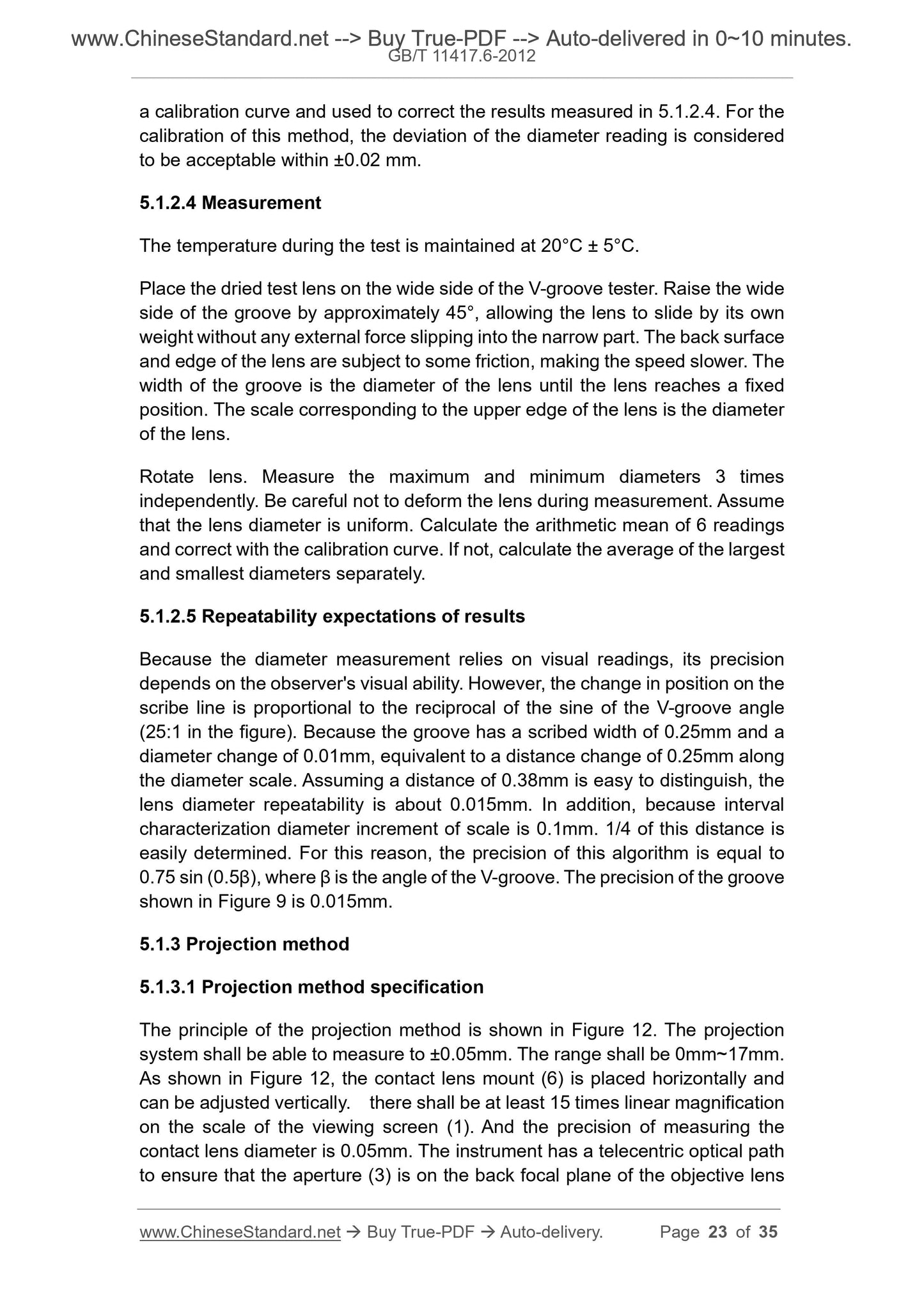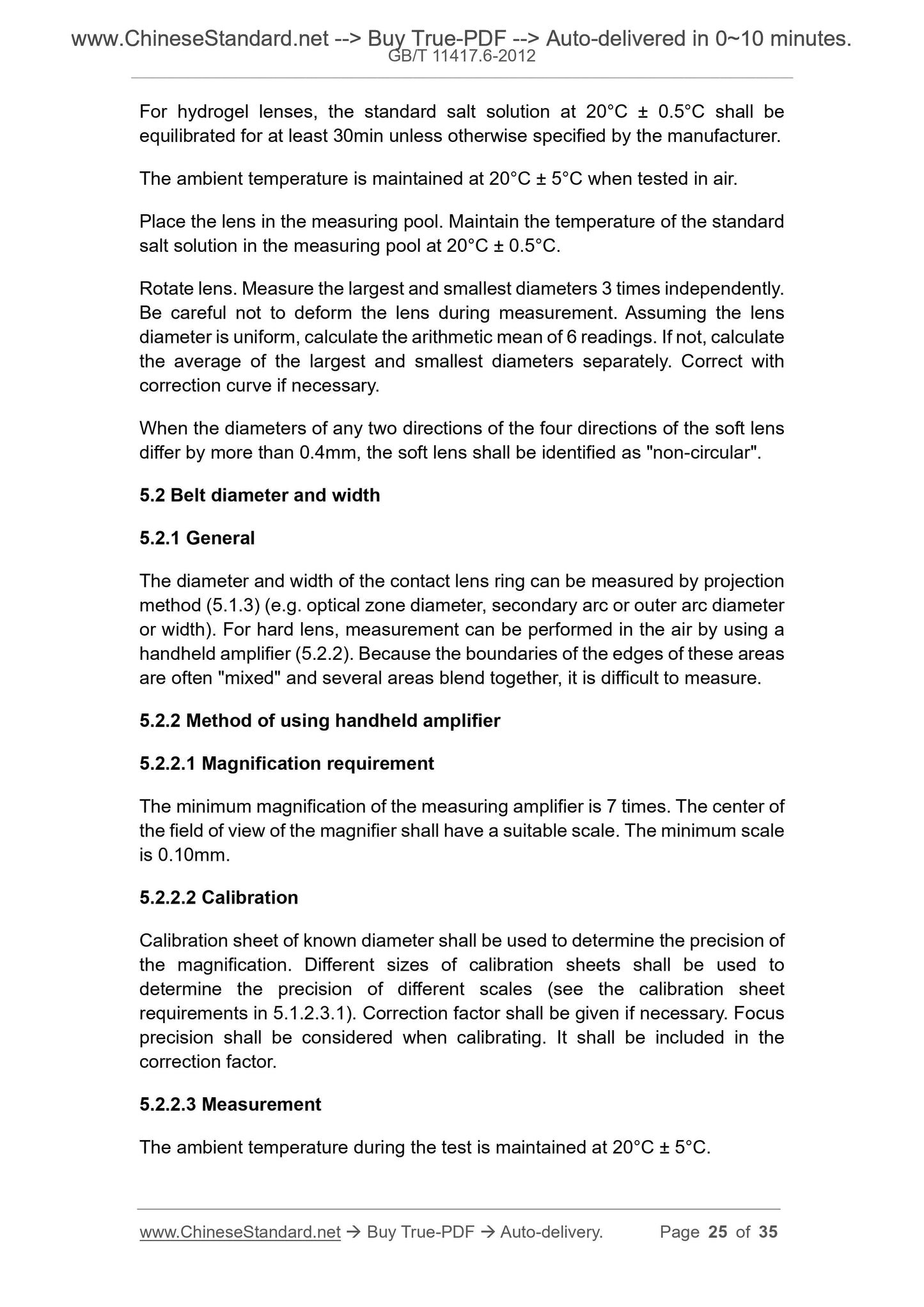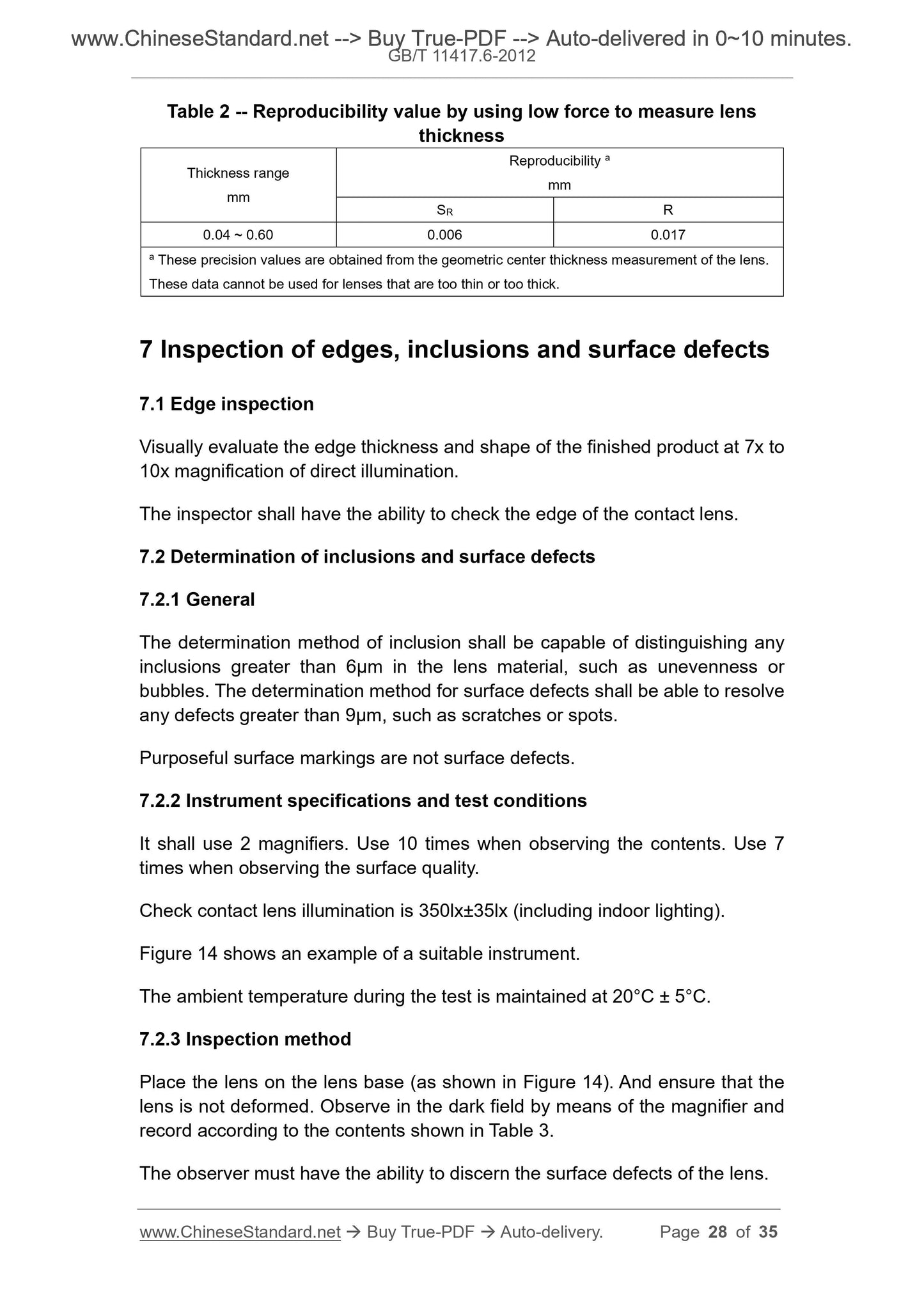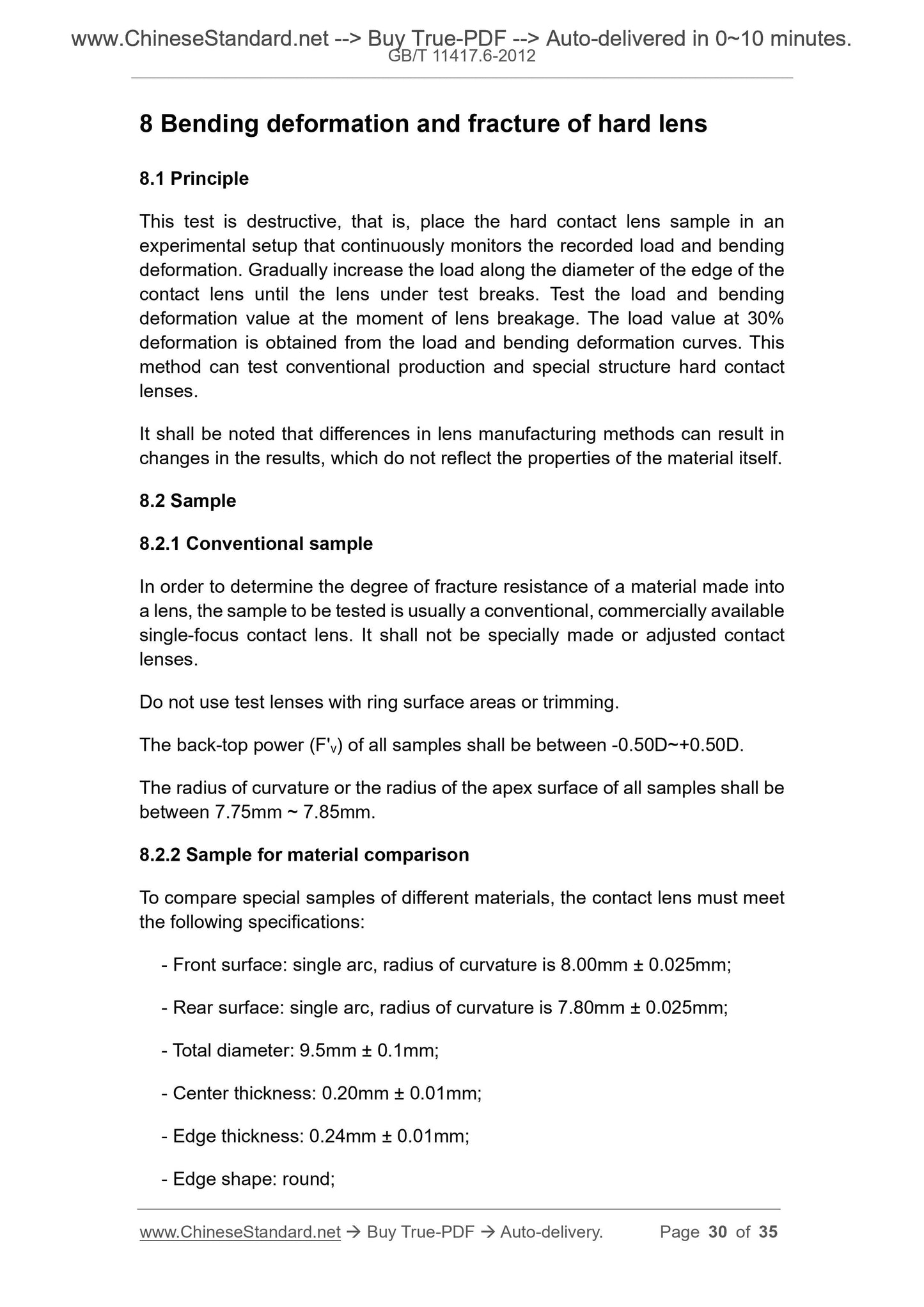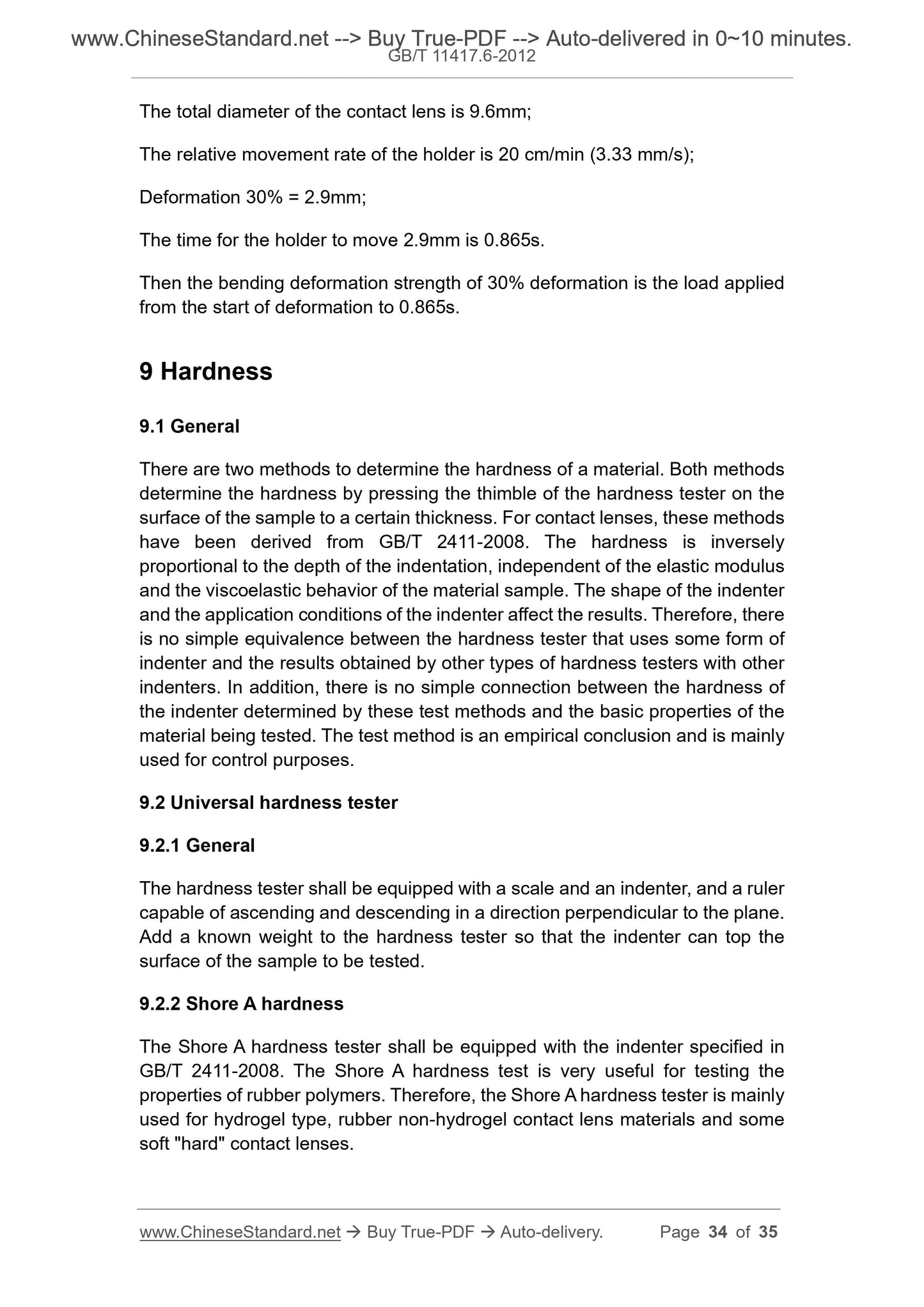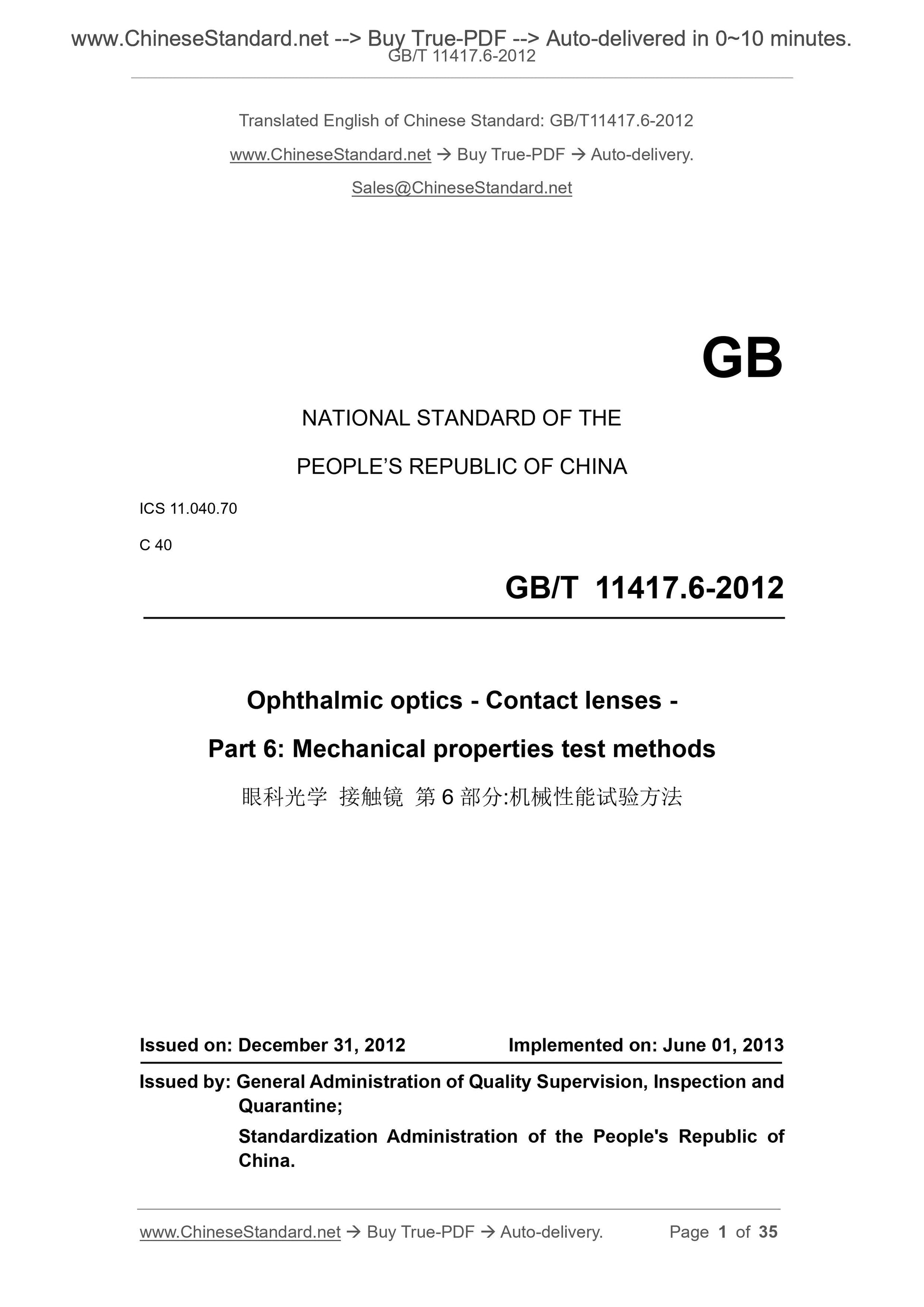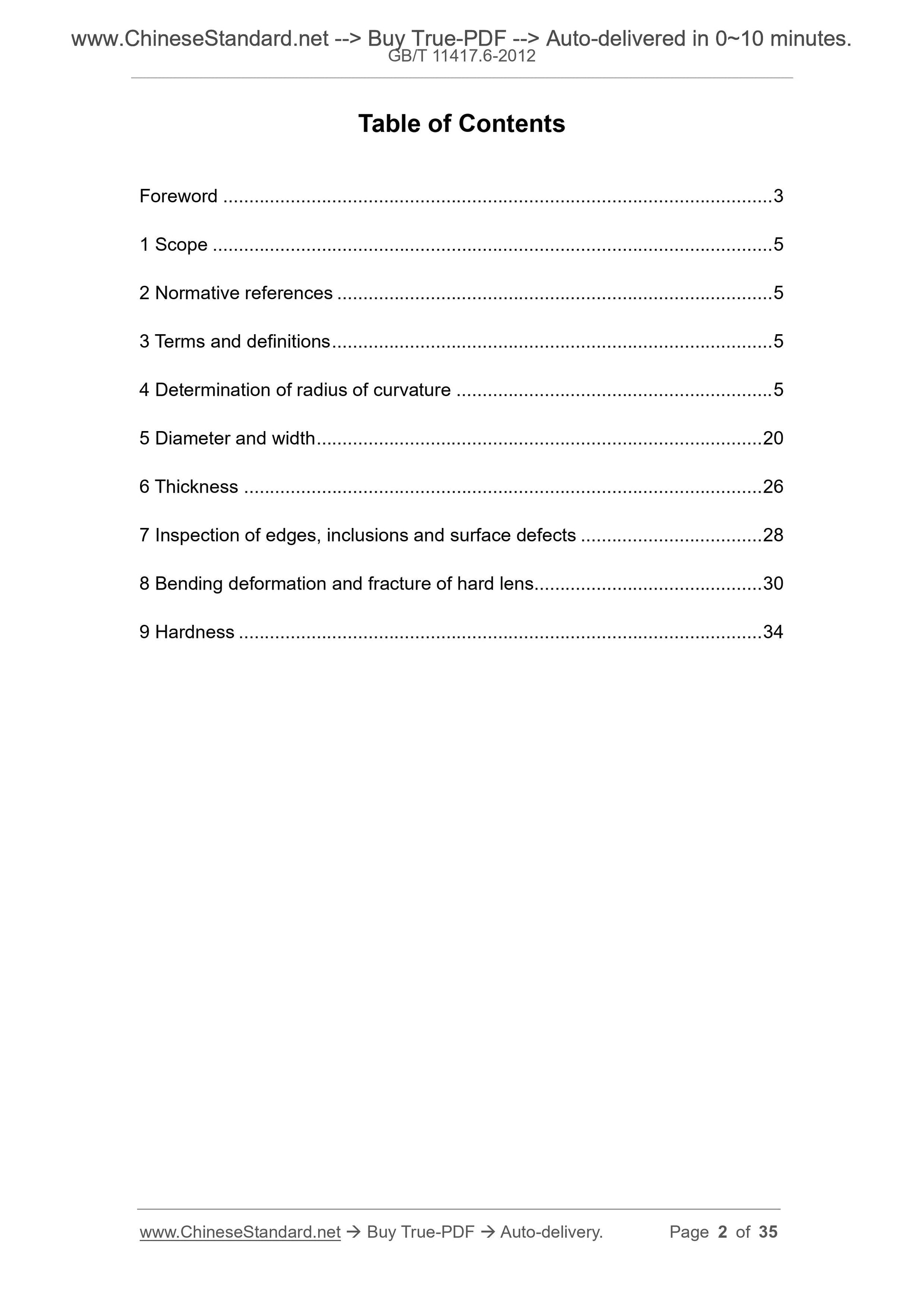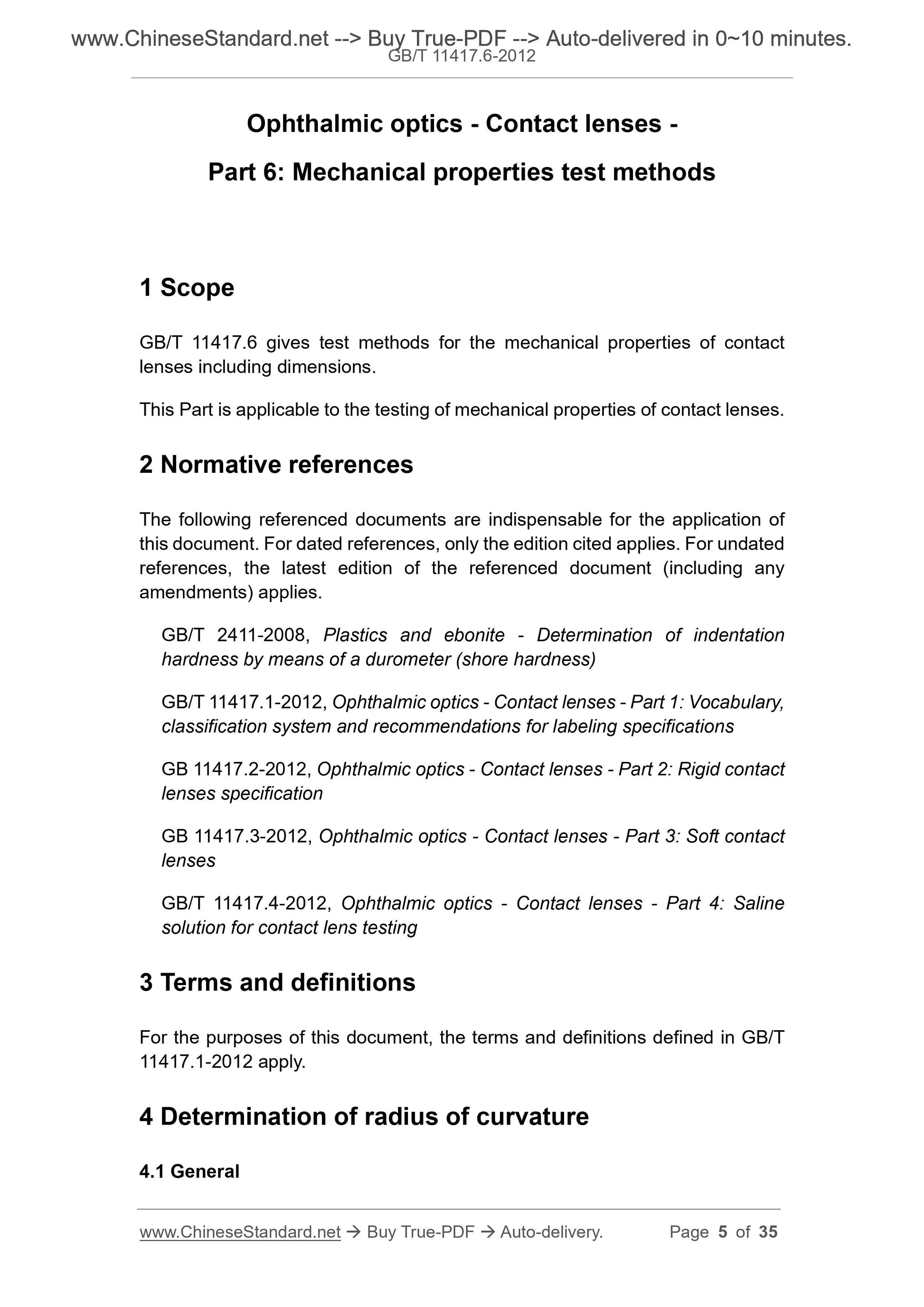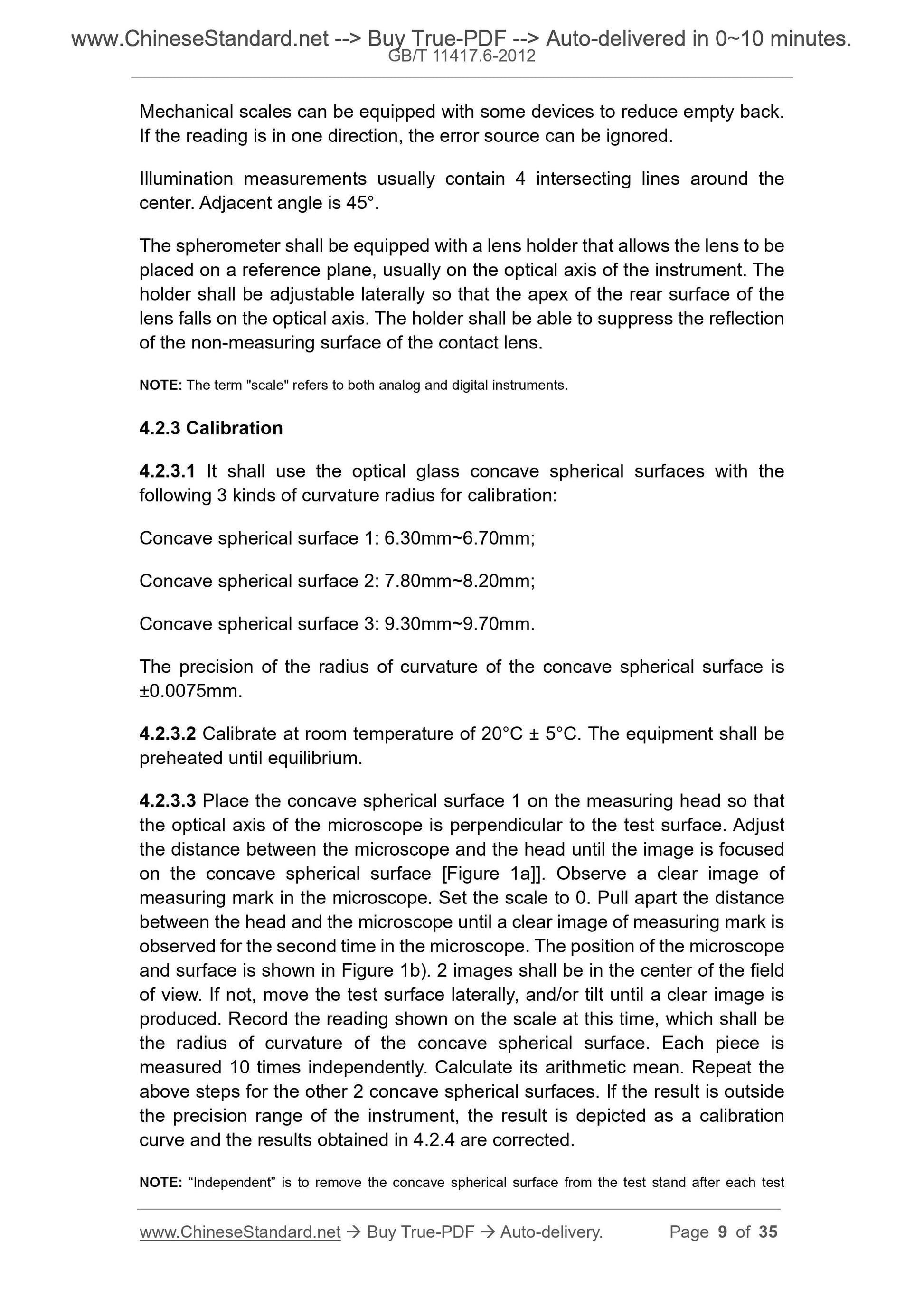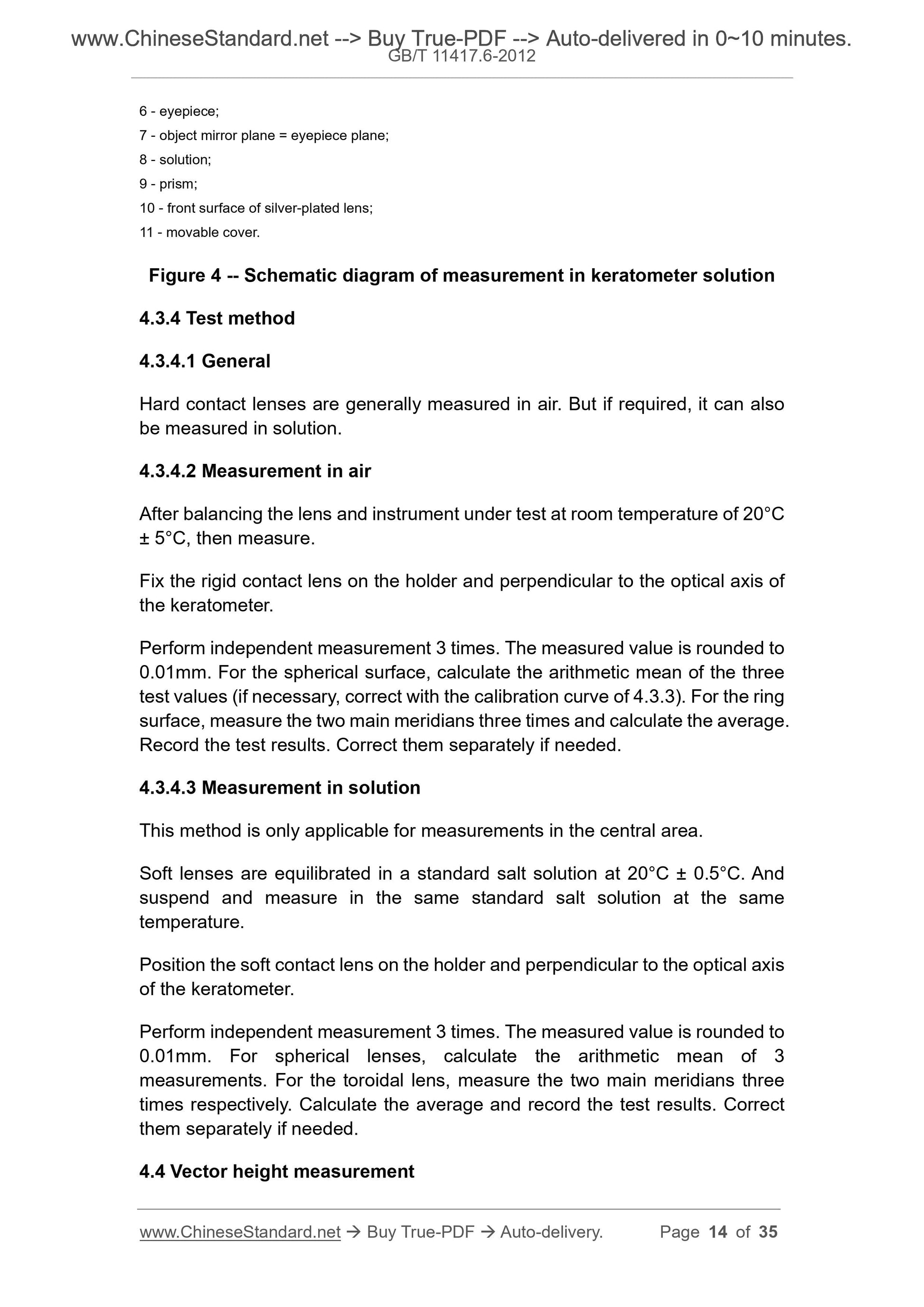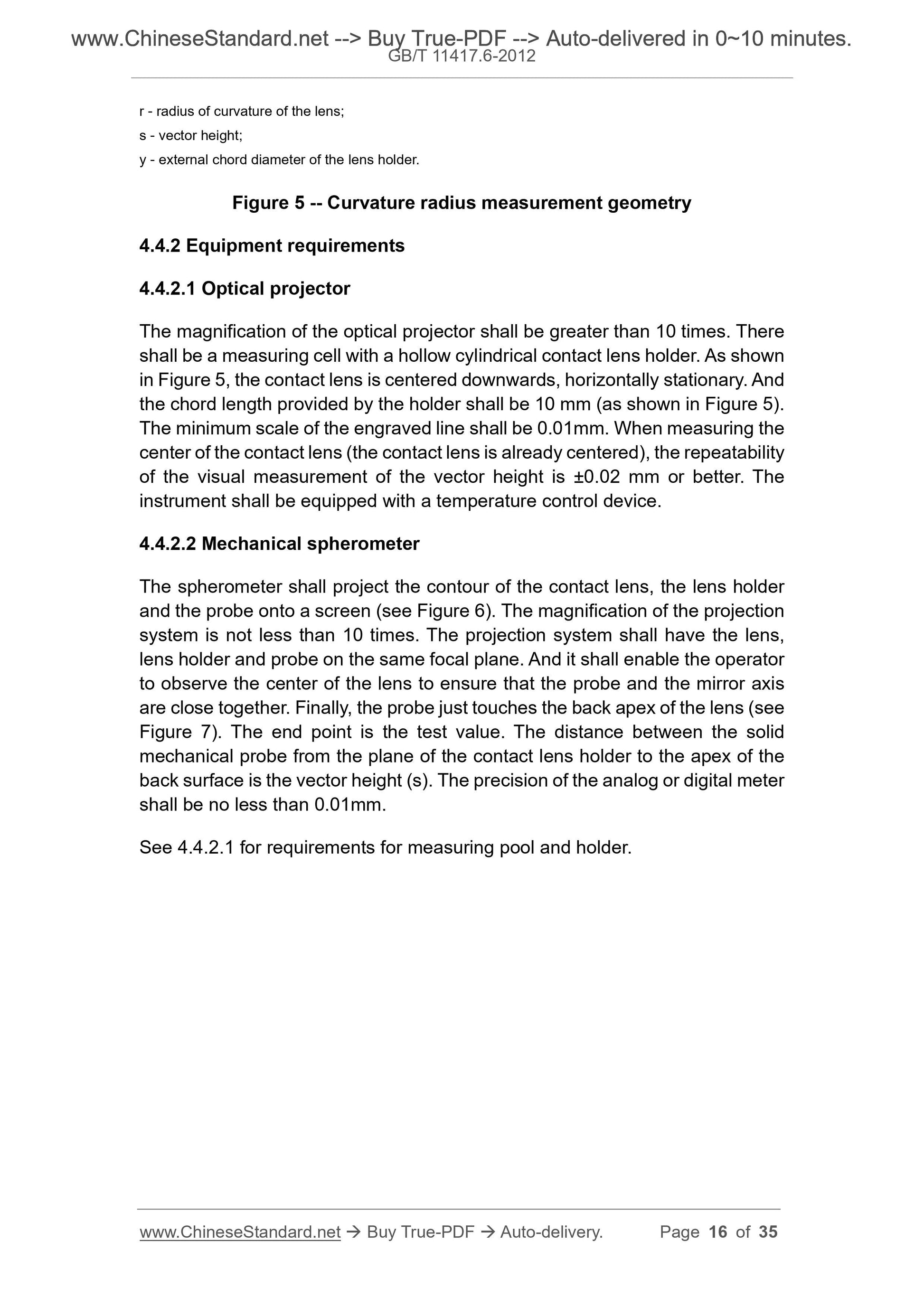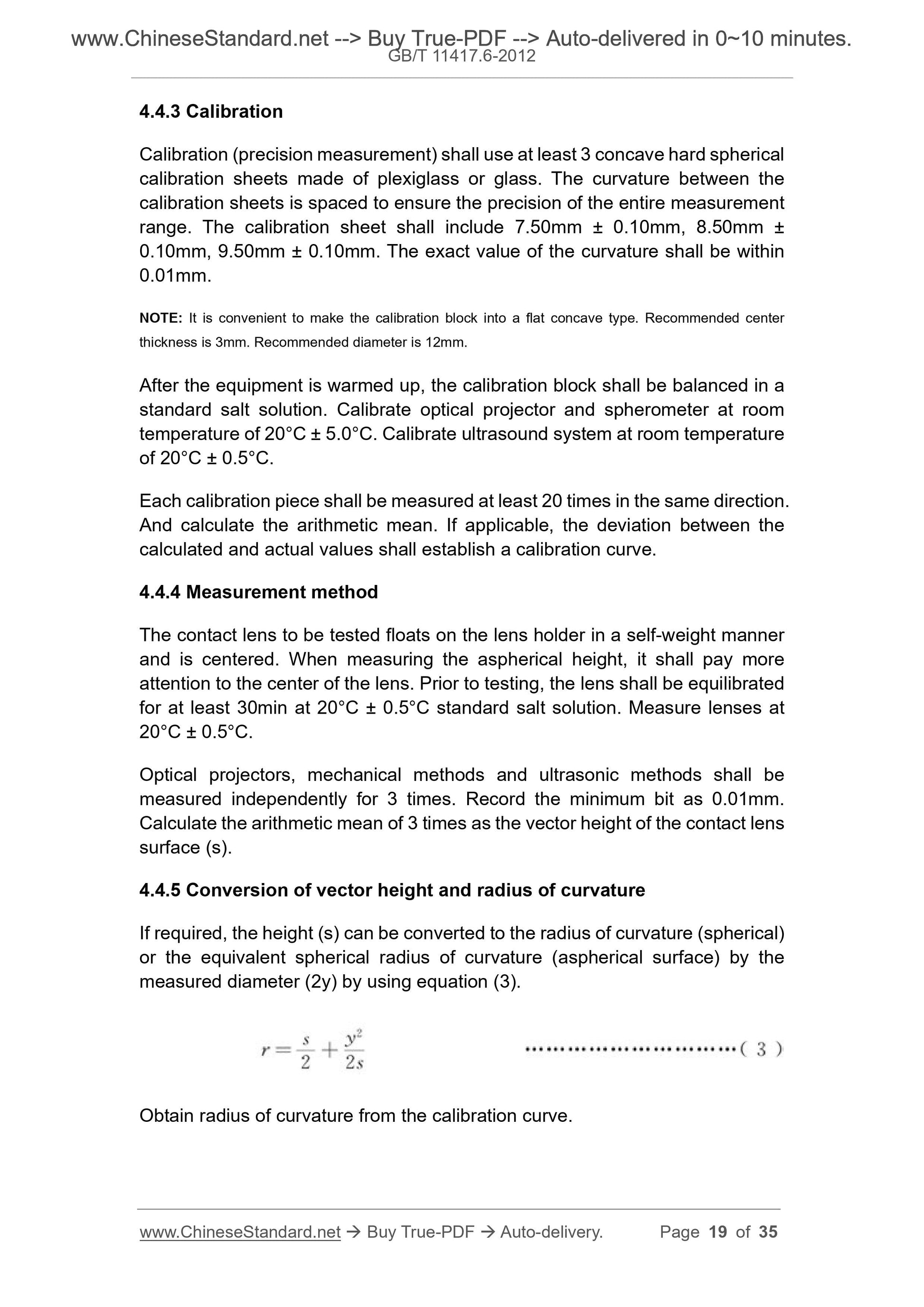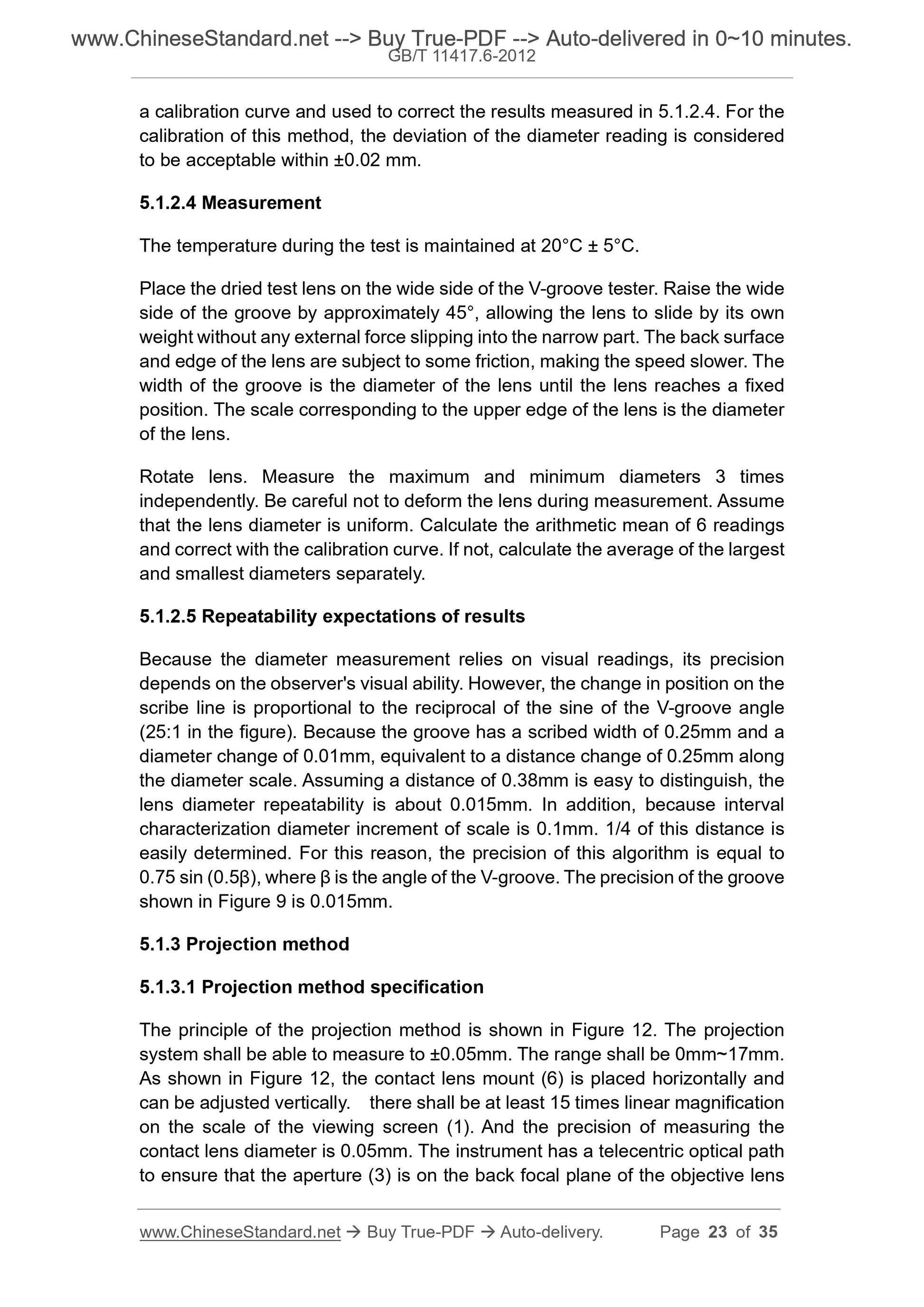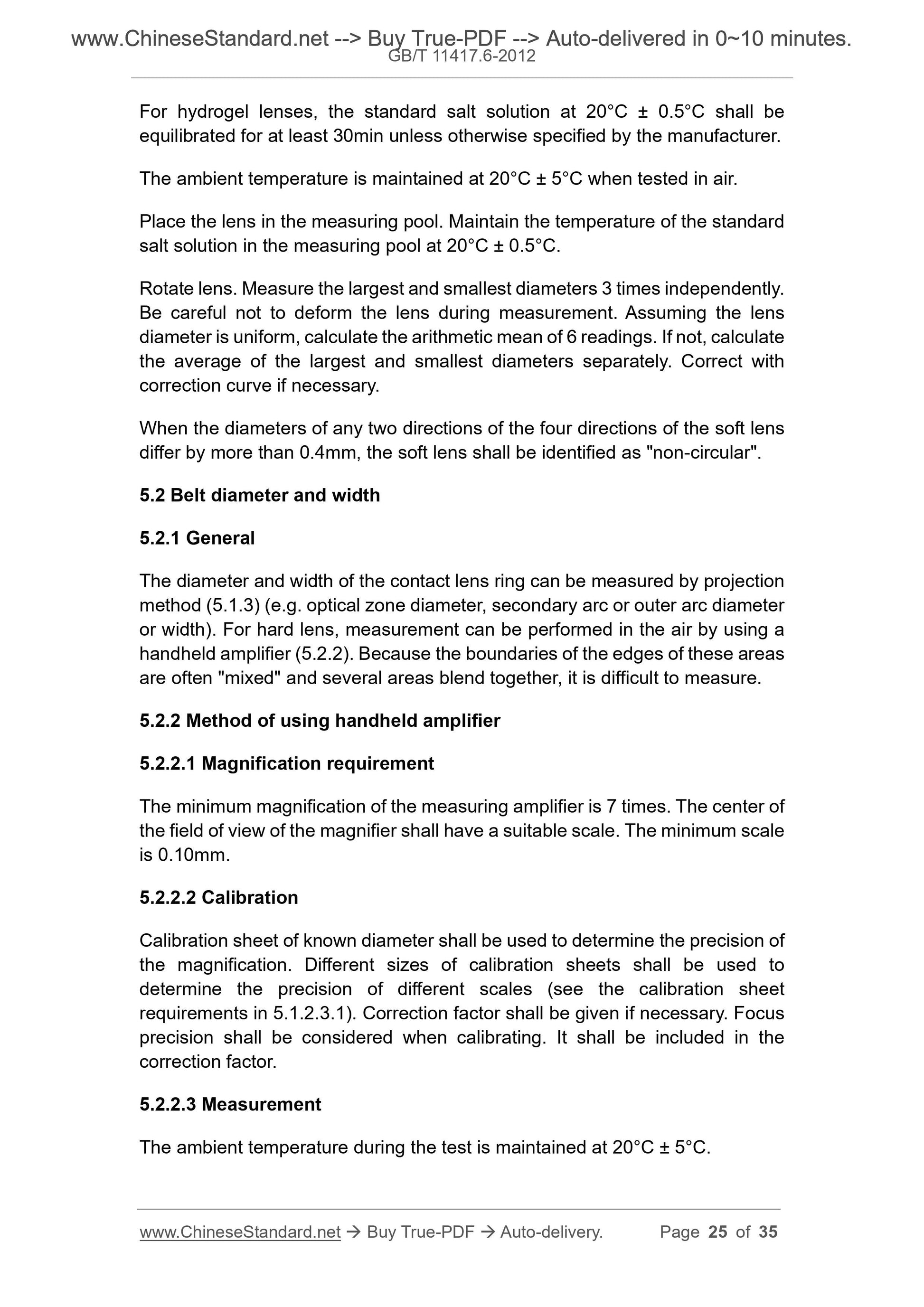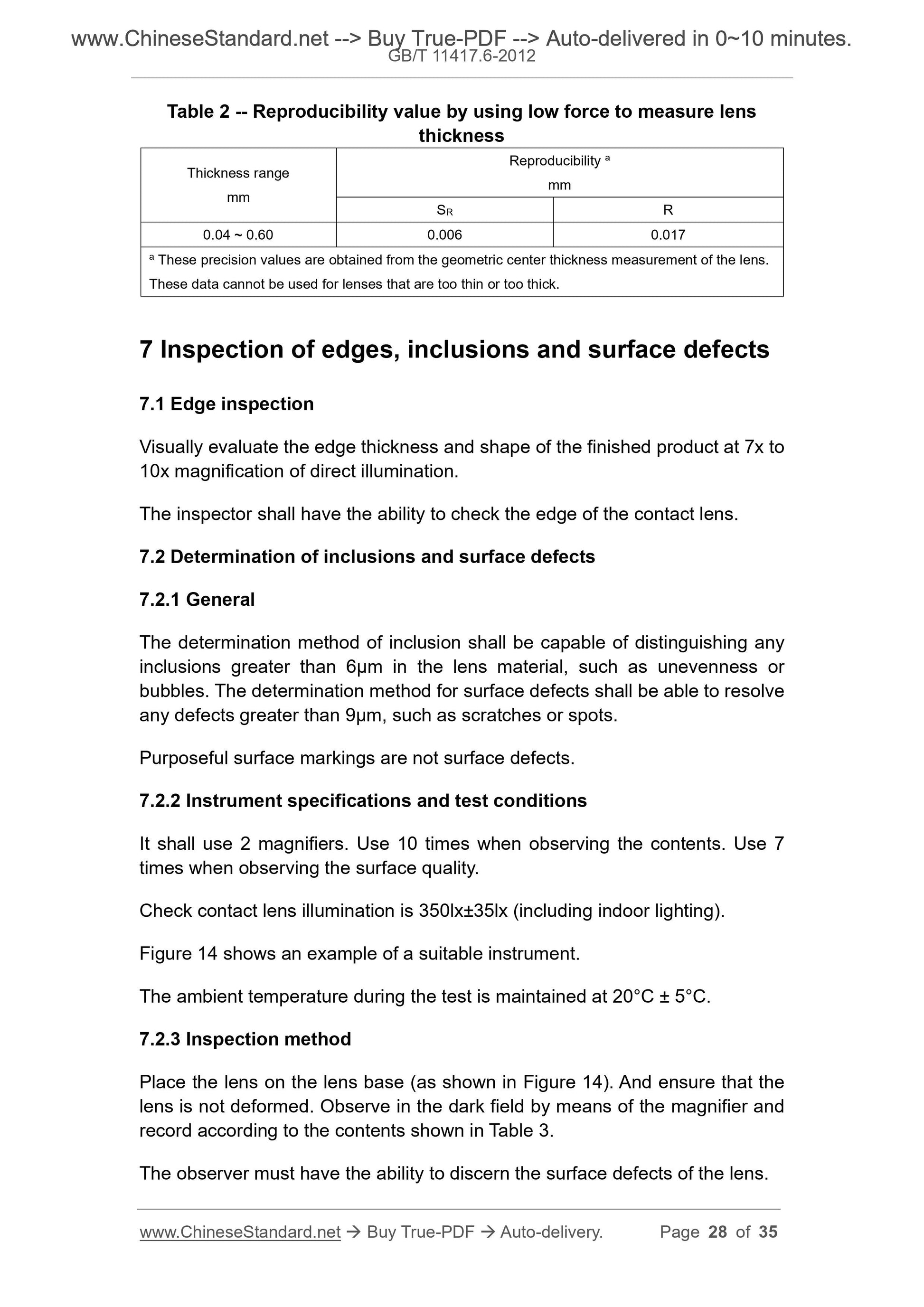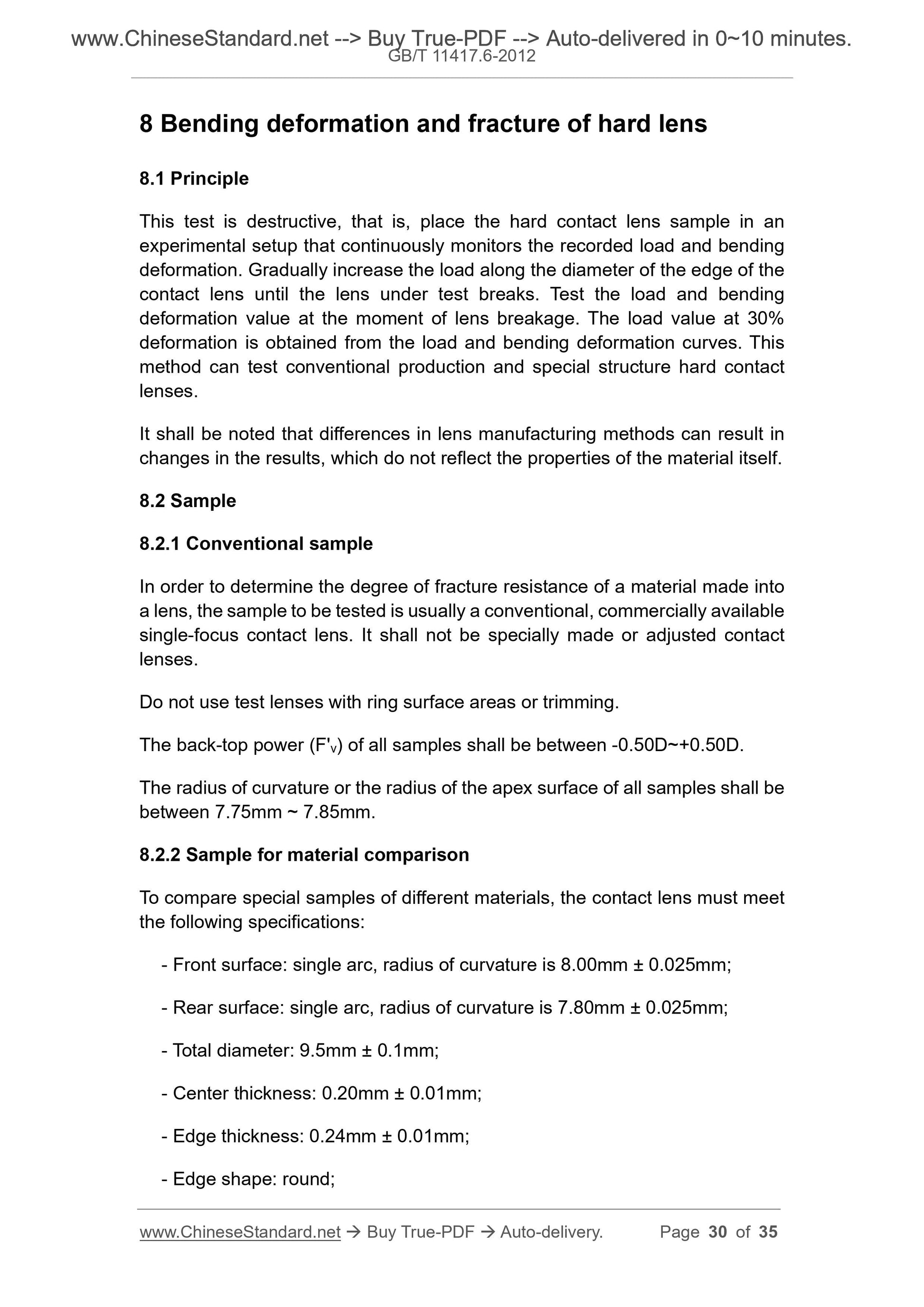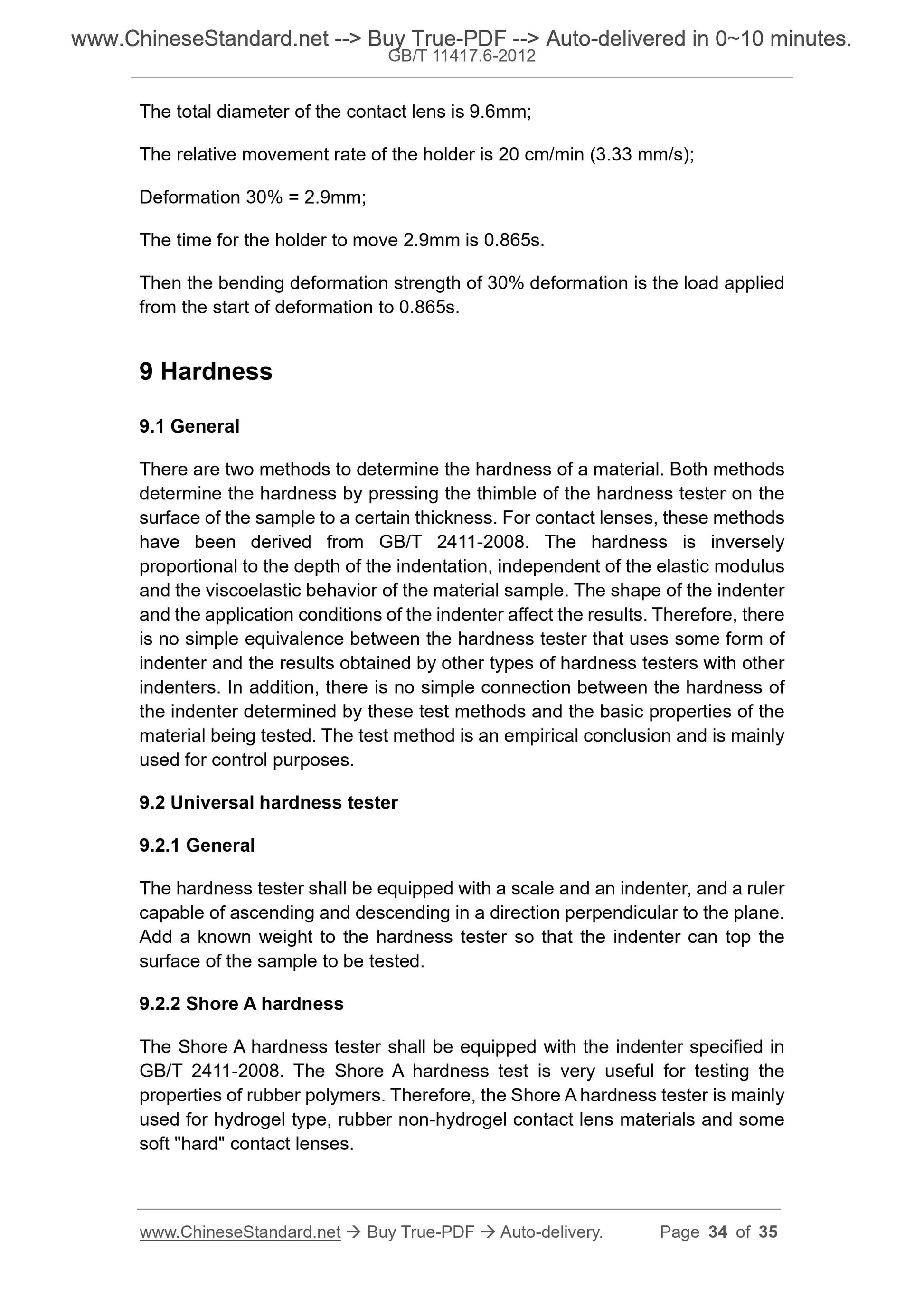1
/
of
12
www.ChineseStandard.us -- Field Test Asia Pte. Ltd.
GB/T 11417.6-2012 English PDF (GB/T11417.6-2012)
GB/T 11417.6-2012 English PDF (GB/T11417.6-2012)
Regular price
$145.00
Regular price
Sale price
$145.00
Unit price
/
per
Shipping calculated at checkout.
Couldn't load pickup availability
GB/T 11417.6-2012: Ophthalmic optics - Contact lenses - Part 6: Mechanical properties test methods
Delivery: 9 seconds. Download (and Email) true-PDF + Invoice.Get Quotation: Click GB/T 11417.6-2012 (Self-service in 1-minute)
Newer / historical versions: GB/T 11417.6-2012
Preview True-PDF
Scope
GB/T 11417.6 gives test methods for the mechanical properties of contactlenses including dimensions.
This Part is applicable to the testing of mechanical properties of contact lenses.
Basic Data
| Standard ID | GB/T 11417.6-2012 (GB/T11417.6-2012) |
| Description (Translated English) | Ophthalmic optics - Contact lenses - Part 6: Mechanical properties test methods |
| Sector / Industry | National Standard (Recommended) |
| Classification of Chinese Standard | C40 |
| Classification of International Standard | 11.040.70 |
| Word Count Estimation | 26,276 |
| Quoted Standard | GB/T 2411-2008; GB/T 11417.1-2012; GB 11417.2-2012; GB 11417.3-2012; GB/T 11417.4-2012 |
| Regulation (derived from) | National Standards Bulletin No. 41 of 2012 |
| Issuing agency(ies) | General Administration of Quality Supervision, Inspection and Quarantine of the People's Republic of China, Standardization Administration of the People's Republic of China |
| Summary | This standard applies to test the mechanical properties of the contact lens. |
Share
